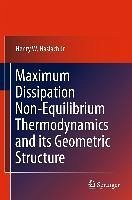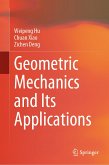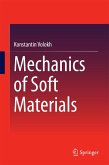. Explains the theory behind a thermodynamically-consistent construction of non-linear evolution equations for non-equilibrium processes, based on supplementing the second law with a maximum dissipation criterion
. Provides a geometric setting for non-equilibrium thermodynamics in differential topology and, in particular, contact structures that generalize Gibbs
. Models processes that include thermoviscoelasticity, thermoviscoplasticity, thermoelectricity and dynamic fracture
. Recovers several standard time-dependent constitutive models as maximum dissipation processes
. Produces transport models that predict finite velocity of propagation
. Emphasizes applications to the time-dependent modeling of soft biological tissue
Maximum Dissipation Non-Equilibrium Thermodynamics and its Geometric Structure will be valuable for researchers, engineers and graduate students in non-equilibrium thermodynamics and the mathematical modeling of material behavior.
Dieser Download kann aus rechtlichen Gründen nur mit Rechnungsadresse in A, B, BG, CY, CZ, D, DK, EW, E, FIN, F, GR, HR, H, IRL, I, LT, L, LR, M, NL, PL, P, R, S, SLO, SK ausgeliefert werden.
Hinweis: Dieser Artikel kann nur an eine deutsche Lieferadresse ausgeliefert werden.
"The author presents his construction of a geometric model for non-equilibrium thermodynamics and his maximum dissipation criterion which is assumed to complement the second law of thermodynamics. ... the author explores different concrete situations where his construction of a maximum dissipation criterion may be applied. ... This book will be interesting for researchers involved either in applied mathematics or in mechanics." (Alain Brillard, Zentralblatt MATH, Vol. 1222, 2011)









